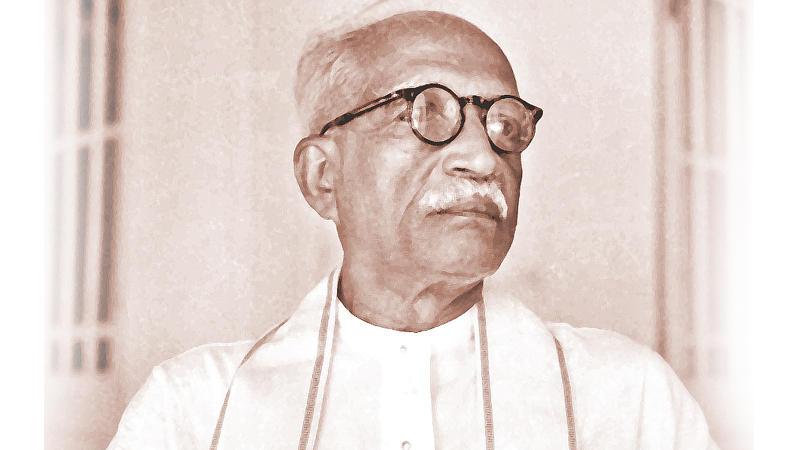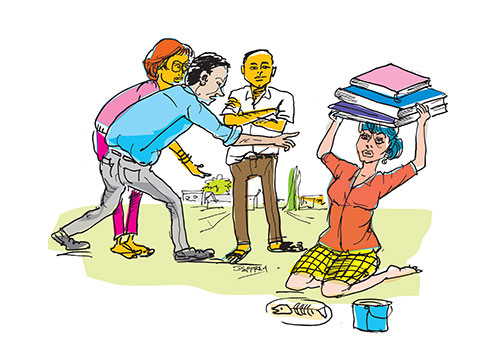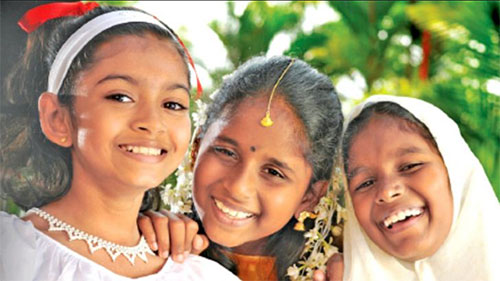By Anushka Kahandagamage
Protesters defeated the dictatorial Rajapaksa regime, making the Rajapaksas resign from their positions, premiership and presidency, of the government. After the collapse of the dynasty, Ranil Wickremesinghe, a Rajapaksa puppet, came to power with the support of a distorted majority in Parliament. Having got himself appointed as President, without a people’s mandate, Wickremesinghe began to suppress the struggle—the very struggle that led to his ascendency. Hours after Wickremesinghe took oath as President, at midnight, when the protesters were preparing to disband the major GotaGoGama (GGG) protest site, the military stormed in, violently assaulting some protesters, including women and people with disabilities. The military attacked media reporters, including BBC journalists, and destroyed the structures built on the location, prompting many to go to the GGG site in support of the protesters. A witch hunt would soon unfold, and, today, just weeks after Wickremesinghe came to power, arbitrary arrests are commonplace in Lanka, most recent and prominent, that of the trade union activist Joseph Stalin.
The Classed nature of the Discourse: The Double Standard
National as well as international activists, academics, journalists, students, condemned the arbitrary violent attack on the GGG site. Social media was swamped with video footage of the attack, and posts, condemning the government’s moves. Many social media posts pointed fingers at the military, which was to be expected. But a notable and recurring theme was the link made between the military’s behaviour and its low education level – “Eighth grade passed Army”. Meanwhile, politicians from the ruling party (and others) publicly condemned the protesters’ actions, even calling them drug addicts (kuddo). The social media discourse targeting the military (low education) and the protesters (drug addicts), although coming from very different places, was steeped in a classed and classist language, and reduced their actions—whether of the protesters’ or of those suppressing the protest —to their level of education or social class.
Yet, there were surprisingly few discussions regarding the education level of the President, who commanded the attack on the protesters. There is no doubt that Wickremesinghe, whose past is linked with horrendous acts of violence, commanded the military to attack GGG. He is also behind the arbitrary arrests of protesters, the very people who placed him in power. While people are aware of Wickremesinghe’s violent tendencies, these inclinations are not discussed in relation to his education level. During the protest, when his house was set on fire, along with his personal library, many condemned the burning of the library, emphasizing the importance of ‘reading’ and ‘knowledge’. Ranil Wickremesinghe is seen as an ‘educated’ politician, well-read and knowledgeable about foreign policy and politics. A double standard manifests itself where the violent acts of the military (by no means am I trying to glorify the military) are criticized on the grounds of their ‘low’ education level, while the violence of Wickremesinghe garners little comment.
Violence and Education
There is no essential link between violence and education, rather capitalist structures have conditioned us to associate violence with under privileged groups and lower levels of education. Formal educational structures sustain hierarchies, power and, in our context, neo-liberal market economies. Education socialises the individual in such a way s/he/they come to embody dominant society’s values, beliefs, and attitudes. Educational institutions are particularly efficient in legitimising the current social order since they play a role not only in training workers in the strict sense of providing them with skills to be productive but also in the naturalization of social relations of production. Education thus entrenches the status quo, and, in that sense, is not an innocent space, rather a space where inequality and hierarchies are sustained and reproduced.
We associate ‘low’ educational levels, and underprivilege, with violence, as we are trained to do so by the political-economic structures which glorify the ‘learned’ and ‘wealthy’. While the military should not be glorified, under any circumstances, it should be understood that the soldiers, who attacked the protesters, on the ground, represent the disadvantaged classes, carrying out their ‘duty’ as commanded by a supposedly ‘educated’ President. It is an irony that society sees people who are directly involved in violence as the generators of violence, rather than the decision-makers who perpetrate violence.
Formal educational institutions, driven by capitalist values, serve to produce, reproduce and sustain such hegemonic narratives. Indeed, there is a link between our pathological social condition and our education system. While our mostly market driven education is trapped in narratives of employability, efficiency or productivity—needed to understand a phenomenon beyond what is given—human values and critical thinking remain neglected on the back burner. Under these circumstances, there is a great need for alternative education forms.
Counter narratives and alternative forms of Education
Education has been crucial to the struggle to depose the dictatorial Rajapaksa regime. In this context, I am referring to the ‘education’ initiatives that have been a key element of the Aragalaya: education on democracy, the constitution, history of struggles, economy and so on. In the GGG site, groups connected to the protest as well as other initiatives organized debates and discussions to raise awareness about economic, political and social issues, to learn about how to utter the correct slogans and how to steer the struggle in the ‘right’ path. In doing so, hundreds of webinars were organized, numerous articles and posts written and videos uploaded. In the GGG main protest site, a library, university, college, and an IT centre were established to support ‘educating’ the people.
‘Education’ was a thread that wove the struggle together. There were (and are) different debates on education at various levels of the struggle where alternative forms of education were discussed, challenging hierarchy and institutionalized education. The protest has opened up a space for people to pursue alternative educational structures and build counter narratives. Unfortunately, most of these efforts ultimately fall, directly or indirectly, in to hegemonic educational structures, where hierarchy and Sinhala Buddhist hegemony are sustained in different forms. Similarly, the activists and academics, among the protesters, who tried to introduce alternative education forms and counter narratives often fell into capitalist hierarchical structures. The majority of the webinars and awareness raising forums were top-down in nature and were held in one language, discriminating against other language groups.
Furthermore, these forums were frequently clogged with ‘experts’ or the kind of academics who preach their opinions to the ‘uneducated.’
In conclusion, existing capitalist educational frameworks train one to discriminate, based on class and educational levels, normalizing certain ways of life and being. For example, it’s fascinating to see how Wickremesinghe was removed from the violence and education discourse while the military was at the centre of it. Alternative forms of education are needed to question and challenge these hierarchies.



